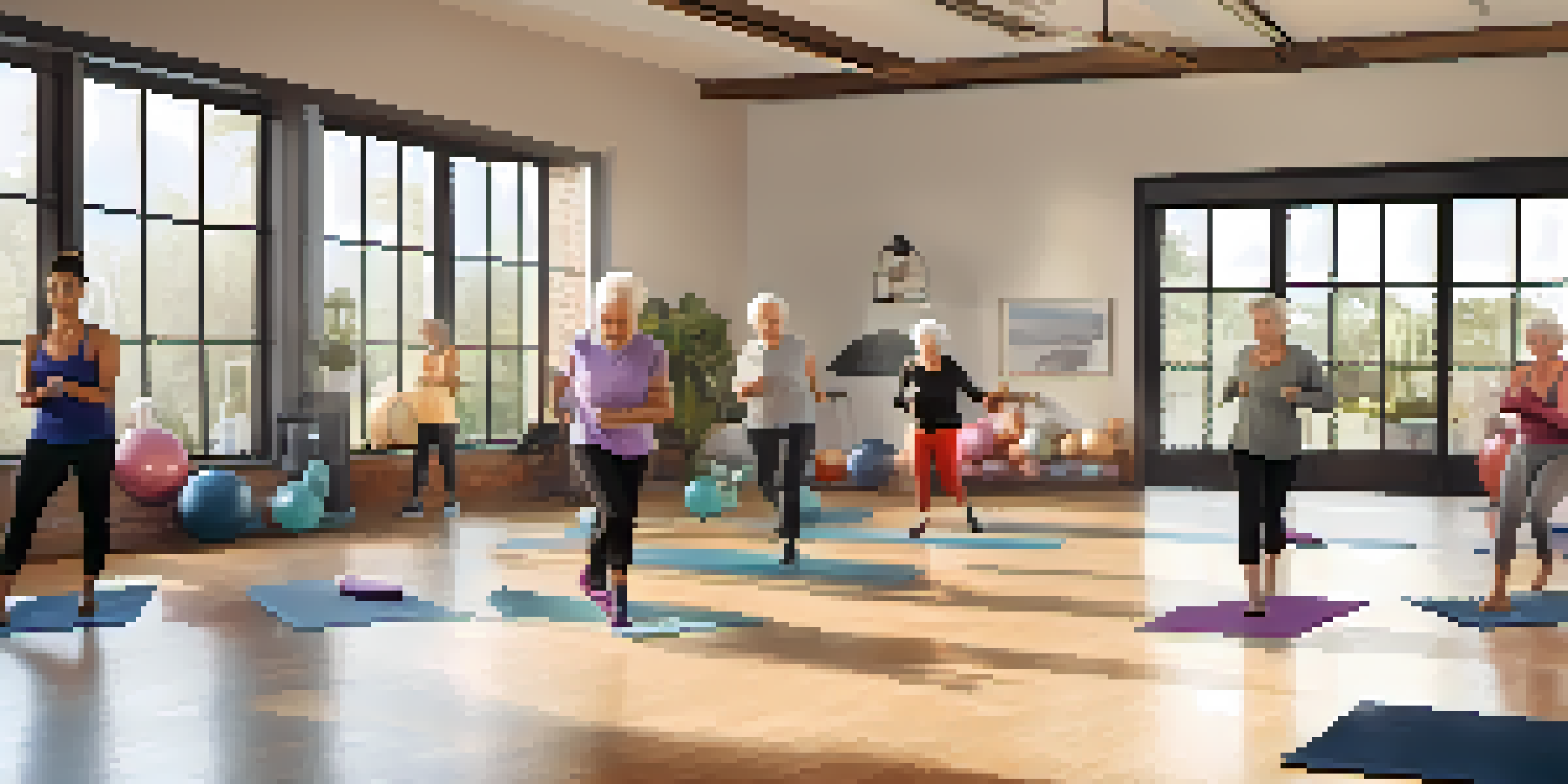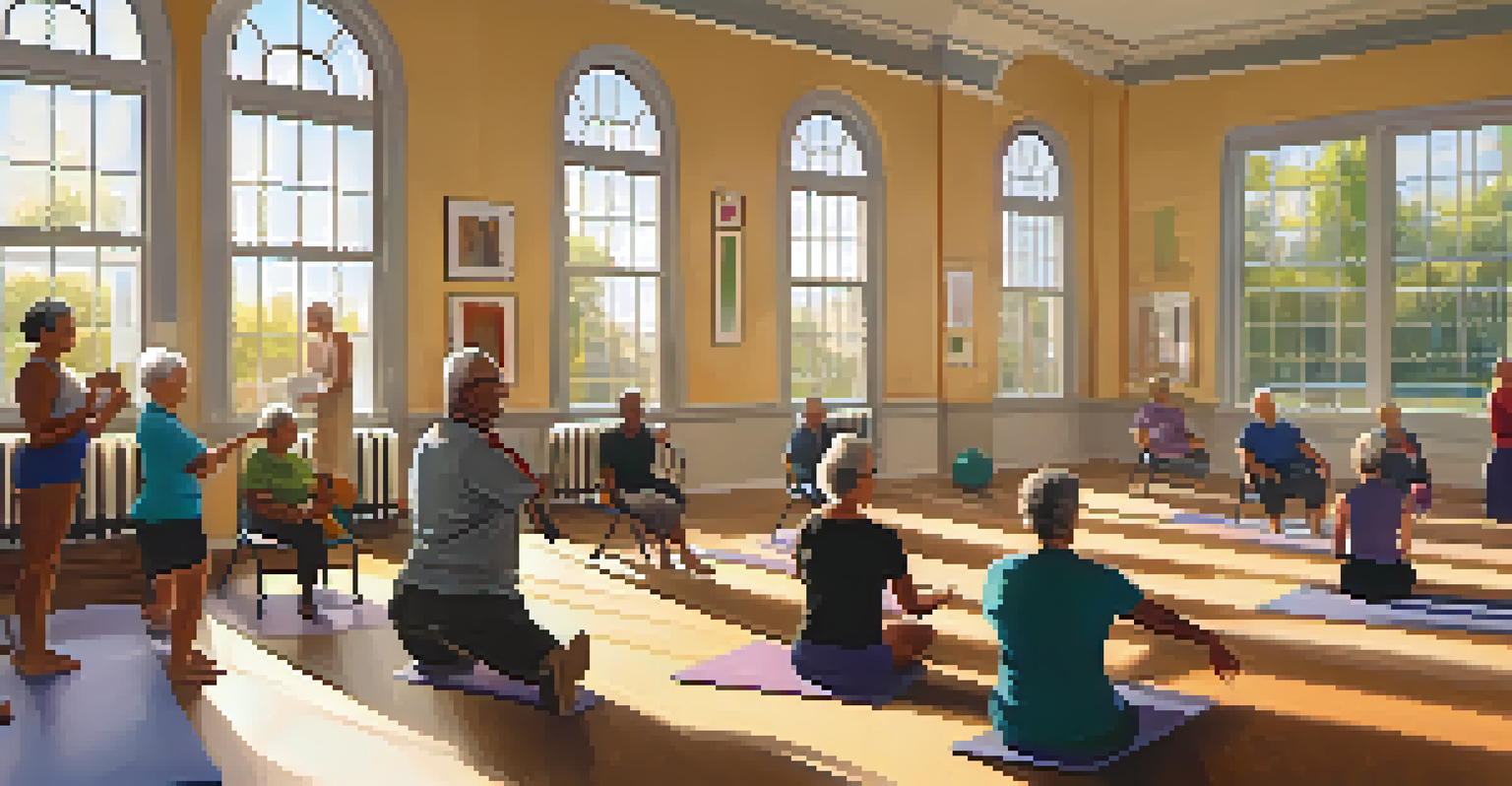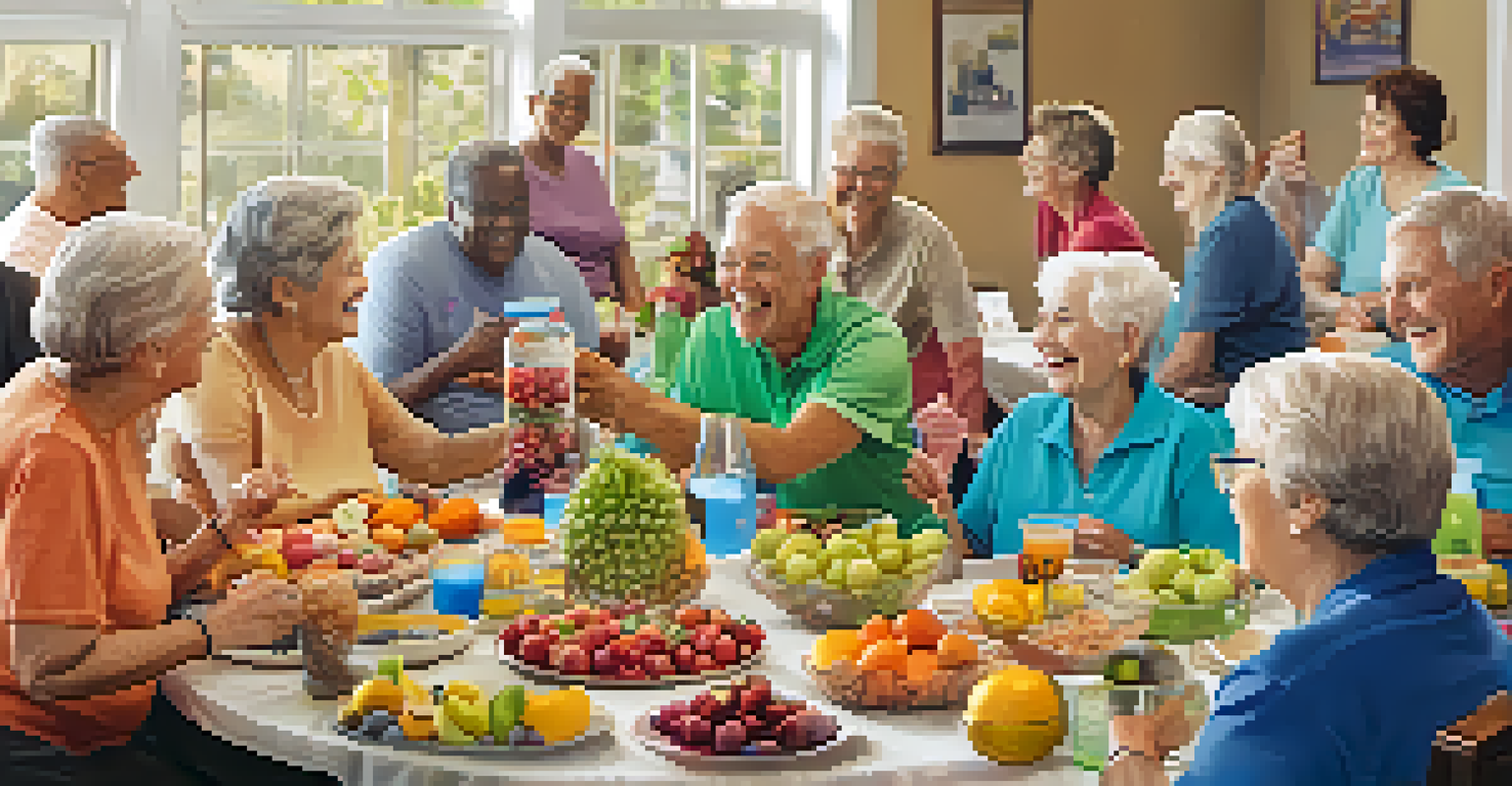Safety Considerations When Training Seniors in Fitness Classes

Understanding the Unique Needs of Senior Participants
When training seniors in fitness classes, it's crucial to recognize their unique physical and cognitive needs. As we age, our bodies undergo various changes that can affect balance, strength, and flexibility. Understanding these changes helps trainers tailor workouts that are both effective and safe for older adults.
The greatest wealth is health.
For instance, seniors may have decreased muscle mass and joint mobility, which can lead to a higher risk of injury. This knowledge empowers trainers to modify exercises and ensure they're not overly strenuous. By focusing on low-impact activities and incorporating gentle movements, we can create a supportive environment that encourages participation.
Additionally, being aware of any pre-existing medical conditions or medications that seniors may be taking allows for better planning of fitness routines. Open communication about their health history fosters trust and ensures that each participant feels valued and understood.
Creating a Safe Class Environment
The physical environment where seniors exercise plays a significant role in their safety. Ensure that the space is well-lit and free of any obstacles that could lead to falls, such as loose mats or equipment. A clutter-free area allows participants to move comfortably and confidently.

Furthermore, using appropriate equipment is essential. For example, providing chairs for seated exercises can help seniors who may struggle with balance. Offering resistance bands or light weights can also enhance strength training without overwhelming them.
Understanding Seniors' Unique Needs
Recognizing the physical and cognitive changes in seniors enables trainers to tailor safe and effective fitness routines.
Finally, consider the layout of the class. Arranging participants in a way that allows for easy movement and visibility of the instructor can prevent accidents. A well-organized space not only enhances safety but also fosters a sense of community among participants.
Incorporating Warm-Up and Cool-Down Routines
Warming up and cooling down are vital components of any fitness class, particularly for seniors. A proper warm-up prepares the body for exercise by gradually increasing heart rate and flexibility. This can include gentle stretching and range-of-motion activities that are easy to perform.
Aging is not lost youth but a new stage of opportunity and strength.
On the flip side, cooling down is equally important as it helps the body transition back to a resting state. This can involve slower-paced movements and stretches that focus on relaxation and recovery. Encouraging these routines can greatly reduce the risk of muscle strains and joint discomfort.
Including these elements not only enhances safety but also promotes a holistic approach to fitness. Seniors who feel physically prepared and relaxed are more likely to enjoy their classes, leading to better adherence to their fitness regimen.
Monitoring Individual Progress and Limitations
Every senior is different, so it's essential to monitor individual progress and limitations during fitness classes. Regular assessments help trainers understand each participant's capabilities, allowing for personalized modifications to workouts. This approach ensures that everyone can engage at their own pace without feeling overwhelmed.
One effective way to monitor progress is through simple check-ins before and after classes. Asking participants how they feel about certain exercises can provide valuable feedback and help in adjusting routines as needed. This ongoing dialogue fosters a sense of empowerment and encourages participants to take ownership of their fitness journey.
Creating a Safe Class Environment
A well-organized and obstacle-free space enhances safety and fosters community among senior participants.
Moreover, celebrating small achievements can boost morale and motivation. Recognizing improvements, whether it’s increased flexibility or endurance, reminds seniors that every step, no matter how small, is significant.
Encouraging Hydration and Nutrition Awareness
Hydration is often overlooked yet remains a critical aspect of fitness for seniors. As we age, our bodies may not signal thirst as effectively, increasing the risk of dehydration. Trainers should encourage participants to drink water before, during, and after classes to maintain optimal hydration levels.
In addition to hydration, nutrition plays a vital role in supporting an active lifestyle. Providing resources or tips on healthy eating can empower seniors to make better dietary choices that complement their fitness routines. For example, emphasizing the importance of calcium and vitamin D can help promote bone health.
By integrating hydration and nutrition discussions into fitness classes, trainers can create a well-rounded approach to health. This not only enhances physical performance but also contributes to overall well-being.
Implementing Appropriate Exercise Modifications
Understanding how to modify exercises is crucial for ensuring safety and effectiveness in fitness classes for seniors. Everyone has different levels of strength, flexibility, and mobility, and modifications can help accommodate those differences. For instance, if a participant struggles with a certain movement, offering an alternative can keep them engaged without risking injury.
Using props like foam blocks or stability balls can also assist in making exercises more accessible. For example, if a senior finds it difficult to balance during a standing pose, using a chair for support allows them to participate comfortably. This approach ensures that everyone feels included and capable.
Encouraging Hydration and Nutrition
Promoting hydration and nutrition awareness supports seniors in maintaining optimal health and enhancing their fitness experience.
Moreover, providing clear instructions and demonstrating modifications can empower participants. When seniors realize that they can adapt activities to suit their needs, they are more likely to stay committed to their fitness journey.
Listening to Feedback and Building Community
Creating a culture of open communication is essential for fostering safety and engagement in fitness classes for seniors. Encouraging participants to share their thoughts and feelings about the exercises not only helps trainers adjust routines but also strengthens community bonds. When seniors feel heard, they are more likely to enjoy their experience and stay motivated.
For example, after a class, consider holding a brief discussion where participants can express what they liked or found challenging. This feedback loop creates an inclusive environment where everyone feels valued and invested in their fitness journey.

Additionally, organizing social events or group activities outside of regular classes can further enhance the sense of community. Building friendships among participants can make fitness feel less like a chore and more like a fun, social experience.